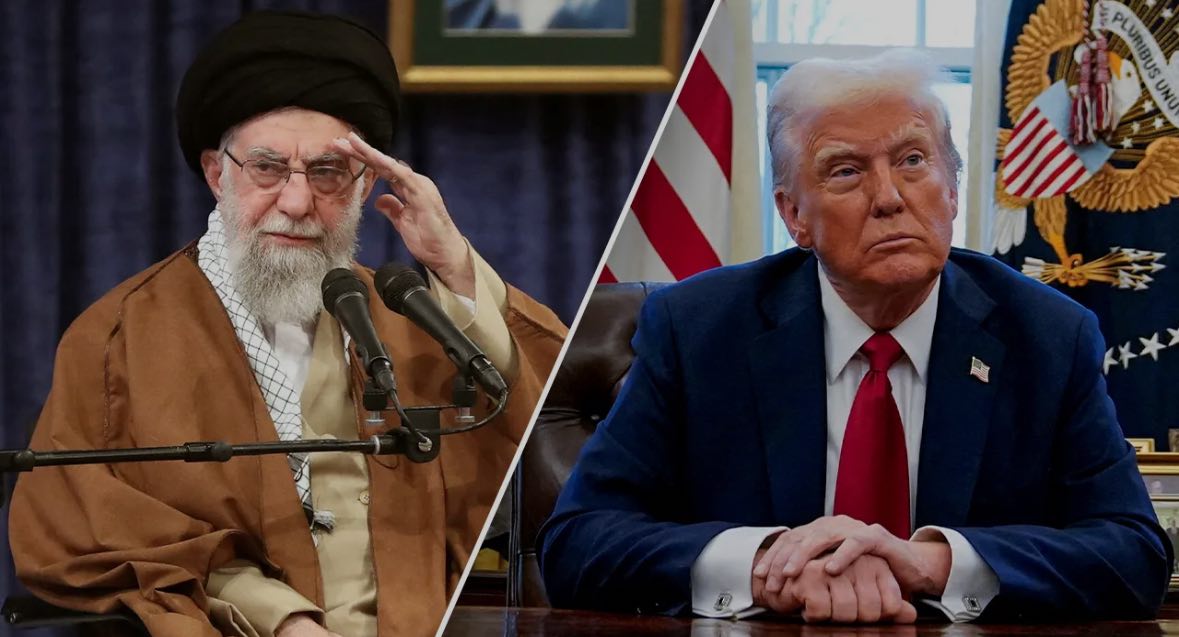Unconditional Surrender in Contemporary History
Unconditional Surrender in Contemporary History
On Tuesday, June 17, the President of the United States, after directly threatening the leader of the Islamic Republic of Iran and announcing awareness of his secret residence, wrote a two-word message on his dedicated social platform, Truth Social, addressing the Islamic Republic: Unconditional Surrender.
This threatening message from Donald Trump, released amid escalating military tensions between Iran and Israel, once again brought the historical concept of unconditional surrender to the forefront of media analyses and political circles.
The term unconditional surrender was first introduced in American history during the Civil War and in the decisive stance of General Ulysses S. Grant at the Battle of Fort Donelson in 1862.
Over time, and especially during the 20th century, this term became one of the important tools in the foreign policy of the United States.
From Franklin Roosevelt’s emphasis at the Casablanca Conference to Harry Truman’s stance in the Potsdam Declaration, this phrase has always represented the United States’ firm will to end the authority of hostile governments, especially dictatorial regimes.
Continuing the analysis and rewriting of the previous text, the second part is also rewritten with an analytical writing style while preserving the semantic structure.
The Historical Origin of the Term Unconditional Surrender
The term unconditional surrender was first used by General Ulysses S. Grant during the American Civil War from 1861 to 1865. In February 1862, during the Battle of Fort Donelson, Grant, with unprecedented decisiveness, demanded that the Confederate forces surrender without any bargaining or negotiation.
This decisive action not only guaranteed a military victory for the Union forces but also earned Grant the nickname ‘Unconditional Surrender Grant.’
This phrase soon became a symbol of iron and unwavering will. Northern press, especially government-supporting media, presented it as a sign of the Union’s seriousness and cohesion against the Southern rebellion.
President Abraham Lincoln at the time also supported this policy because, in his view, it represented the authority and unity of the United States.
Although at that time this concept was not yet directly related to dictatorships, it laid the foundation for an approach that later prominently appeared in U.S. foreign policy. The concept of unconditional surrender, based on rejecting any compromise and forcing the opponent to accept absolute defeat, over time evolved from a purely military strategy to a tool in diplomacy and international politics.
In the 20th century, especially during World War II, this strategy became a central approach for America in confronting authoritarian regimes. The direct impact of this approach on the fate of leaders like Adolf Hitler, Benito Mussolini, and Emperor Hirohito is well observed.
World War II and the Key Role of Unconditional Surrender Policy
In January 1943, Franklin D. Roosevelt, then President of the United States, announced during the Casablanca Conference that the Allies would only end the war if Germany, Italy, and Japan accepted unconditional surrender.
This decision, made without full coordination with British Prime Minister Winston Churchill, was inspired by the bitter experiences after World War I.
Roosevelt was concerned about the repetition of the ‘stab-in-the-back’ myth, a narrative that emerged in German public opinion after Germany’s defeat in World War I, claiming that the German army was not defeated on the battlefield but rather betrayed internally by socialists, Jews, and liberal politicians.
This narrative later became one of the pillars of nationalist propaganda, especially for the Nazis, playing a significant role in the rise of Hitler and the fall of the Weimar Republic.
As a result, the announcement of the unconditional surrender policy by Roosevelt at the Casablanca Conference aimed to prevent the recurrence of such narratives.
This policy emphasized that the war would continue until the complete destruction of the Nazi regime and that no behind-the-scenes agreement or separate negotiation with the enemy would occur.
Moreover, this stance reassured Joseph Stalin, the leader of the Soviet Union, that the United States and Britain were not seeking a separate peace with Germany and would remain committed to the tripartite alliance.
This issue greatly helped solidify cooperation among the Allies.
Dictators’ Reactions to the Unconditional Surrender Policy
Adolf Hitler and Nazi Germany – The announcement of the unconditional surrender policy by the Allies inadvertently fed the Nazi propaganda machine.
Hitler presented this policy as a sign of the Allies’ intention to completely destroy Germany, which prolonged German resistance until the final days of the war in May 1945.
With the Allied forces advancing into German territory, Hitler ultimately committed suicide in his Berlin bunker, and Germany surrendered without him.
Benito Mussolini and Fascist Italy – Although the unconditional surrender policy was also applied to Italy, Mussolini’s fall in September 1943 was more a result of internal pressures and a coup by the Grand Council of Fascism than a direct outcome of this policy. Mussolini was deposed in July 1943, then arrested, and executed by Italian resistance forces in April 1945.
In fact, the mentioned policy played a complementary role, but the main factor in his regime’s collapse was popular uprisings and a split in the power structure.
Emperor Hirohito of Japan – In the Potsdam Declaration of July 1945, U.S. President Harry Truman demanded that Japan surrender unconditionally. This request was accompanied by the detonation of two atomic bombs in the cities of Hiroshima and Nagasaki in August of the same year, which eventually forced the Japanese government to accept surrender.
However, unlike the fate of Hitler and Mussolini, Emperor Hirohito retained his imperial position after the war and remained a national symbol of Japan until 1989.
This situation reflects the flexibility in the implementation of the unconditional surrender policy by the Allies, especially the U.S., which established a balance between military victory and the preservation of Japan’s social structure by considering cultural and political conditions.
Overall, the unconditional surrender policy, as one of the strategic principles of the United States during World War II, reflected an approach that sought the definite end of authoritarian governments and the prevention of the reproduction of imposed defeat myths. A concept that still echoes in some political discourses today, especially concerning non-liberal regimes.
Continuing the analytical rewriting of the previous text, the final section is also presented with similar writing without reducing content and volume.
Contemporary Applications and Their Consequences
In contemporary times, although the term unconditional surrender is less publicly and officially used, its essence and substance can still be traced in U.S. foreign policy. This concept is particularly used indirectly or implicitly in dealing with governments considered threats by the U.S.
In this context, on Tuesday, June 17, Donald Trump, by publishing a short two-word message on his social network, Truth Social, once again brought the phrase ‘Unconditional Surrender’ into the political lexicon of the day.
This threatening message, issued amid a severe crisis between the Islamic Republic of Iran and Israel and under the shadow of Tehran’s nuclear program, demanded the complete and unconditional surrender of the Islamic Republic. Although this stance has not yet led to a tangible result, it clearly indicates a desire to revive this traditional doctrine to exert maximum pressure on geopolitical enemies.
Compared to the World War II era, current threats have more political and diplomatic aspects than military ones. Nevertheless, their psychological and strategic nature is similar. These types of messages, even if they do not directly lead to military confrontation, are tactically part of the narrative war and exert psychological and political pressure on the opposing side.
Another example with similar approach traits is the fate of Saddam Hussein in Iraq. Although then U.S. President George W. Bush did not use the term unconditional surrender, the prerequisites set before the attack on Iraq in March 2003—including complete disarmament and Saddam’s removal from power—reflected the same logic.
Ultimately, Saddam Hussein was captured in December 2003 and executed after trial in December 2006. The key difference in this case was the implementation of this policy through direct military occupation rather than through an official and declared surrender.
Evaluating the Impacts of This Approach
Examining the effects and consequences of the unconditional surrender strategy shows that its success or failure depends on historical conditions, the political structure of the enemy, and the type of regime involved in the war.
In some cases, like Japan, this policy led to a quicker end to the war and prevented continued bloodshed, but in cases like Nazi Germany, the same firm stance became a pretext for enemy propaganda and increased military resistance until the last moments.
Critics of this policy argue that such an approach can lead to increased human casualties and destruction because it drives the opposing side to fight to the point of annihilation. In their view, the absence of negotiation or compromise eliminates options such as tactical surrender or peaceful solutions.
In contrast, supporters believe that this policy helps establish a more stable peace by preventing ambiguous negotiations and fragile truces and prevents the reconstruction of authoritarian regimes after the conflict.
A Tough Policy or a Costly Approach
The phrase unconditional surrender, from the time of General Grant in the 19th century to its reuse by Donald Trump in 2025, has always been a symbol of the United States’ firmness and decisive strategy against its enemies. However, the results of this policy have not been uniform and consistent.
The fate of leaders targeted by this approach has varied: Adolf Hitler committed suicide at the end of the war, Benito Mussolini was executed by partisans, Hirohito retained his monarchy despite accepting defeat, and the outcome of the recent threat against Ali Khamenei, the leader of the Islamic Republic, remains uncertain and shrouded in ambiguity.
This policy during World War II led to the cohesion of the Allies and displayed strategic unity, but in some cases, it also drove the opposing side to more stubborn resistance.
In today’s world, where international relations are more complex, media-driven, and multilayered than ever before, the effectiveness of such threats remains a topic of discussion.
The central question is whether in the era of complex diplomacy, such decisive threats can still force authoritarian and rogue regimes to retreat.
Or does the world need softer, more multilateral solutions that are more compatible with modern realities?
Historical experience does not provide a definitive answer to this question, and this puzzle remains open in the equations of global politics.

